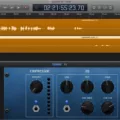Macs are computers designed, developed and marketed by Apple Inc. They are known for their intuitive operating system, Mac OS X. If you own a Mac, you’re likely familiar with the various features and functions it offers. One such feature is the ability to go full screen with any application or window.
Going full screen on your Mac is a great way to increase productivity and focus on what’s important. It also allos you to take advantage of all the space available on your display by maximizing the size of an application or window. To go full screen on your Mac, simply follow these steps:
1. Open an application or window that you want to make full screen.
2. Look for the two arrows pointing away from each other in the upper right corner of the window (or three if using split view). Click anywhere inside this icon to enter full screen mode.
3. The app or window should now take up your entire display and show only what’s important without any distractions.
4. To exit full screen mode, click anywhere inside the two arrows again, or press Esc key on your keyboard to return back to normal view.

Using full screen mode can be especially useful when working with multiple applications at once or when watching videos online as it eliminates distractions and maximizes available space on your display for better viewing experience. Whether you’re working on a project or just browsing the web, taking advantage of your Mac’s full-screen capability can make all the difference in giving you a better user experience overall!
Using F11 on a Mac
To use F11 as a keyboard shortcut on a Mac, go to the Apple menu and select System Preferences, then click Keyboard. On this page, you can customize the keyboard shortcuts to whatever you would like. To use F11 as a shortcut, click the ‘+’ button at the bottom of the list of shortcuts. In the next window that appears, select ‘F11’ from the dropdown list of avilable keys. Then choose an action for this key from the Action list; for example, you may want to assign ‘Show Desktop’ or ‘Decrease Volume.’ Finally, click Add and your new keyboard shortcut will be active.
Troubleshooting Full Screen Issues on Mac
It’s possible that you may not be able to get full screen on your Mac due to a few different reasons. First, make sure that the app you are trying to use supports full screen mode. Not all apps have this feature enabled by default. Second, check if there is an update available for the app in question, as this could potentially enable the full screen mode option. Finally, if all else fails, try restarting your Mac and see if that resolves the issue.
Maximizing Mac Screen Using Keyboard
To maximize your Mac screen with the keyboard, press and hold the Option key whie pressing the green button in the top-left corner of an app window. This will cause your window to expand to fill the entire screen. To return to the previous window size, you can again Option-click the button.
Using the Mac Shortcut for Full Screen
On the Mac, the shortcut for entering full screen mode is Fn+F (Function+F) in macOS Monterey or later, and Ctrl+Command+F in macOS Big Sur and earlier. To enter full screen mode usng the menu bar, open the View menu at the top of your screen and select Enter Full Screen.
Troubleshooting F11 Key Not Working on Mac
If your F11 key is not working on your Mac, it may be because you have accidentally enabled the Fn keys in the System Preferences. To check this, open the System Preferences and click on Keyboard. In the Keyboard tab, look for a checkbox that says ‘Use all F1, F2, etc. keys as standard function keys’. If it is checked, uncheck it and try pressing the F11 key again. If it stll doesn’t work, you may need to update or reinstall your keyboard driver.
Troubleshooting F3 Not Working on Mac
F3 is typically used to open a search window in Windows, but on Macs this same key combination is used for other functions. If you’re having trouble with the F3 key not working on your Mac, there are a few potential causes. First, make sure the F lock key on your keyboard is not activated. On Macs, you can also check System Preferences > Keyboard & Mouse > Keyboard tab and make sure the checkbox to “Use all F1, F2 etc. keys as standard function keys” is selected. If you’re still having trouble with the F3 key not working, it could be an issue with the software or application you’re using – try searching online for more specific troubleshooting advice for that particuar program.
Returning to Full Screen
To get back to a full screen, simply press the F11 key on your keyboard. This will work in both Windows and many popular web browsers, such as Internet Explorer, Google Chrome and Mozilla Firefox. Pressing F11 agin will turn off the full screen function.
Making a Window Full Screen
To make a window full screen, you can use the keyboard shortcut ALT+ENTER (Windows) or COMMAND+ENTER (Mac). This will make the application expand to fill the entire screen, hiding the menu bar, tool bar, and title bar. If you want to go back to the normal display mode, press ALT+ENTER (Windows) or COMMAND+ENTER (Mac) again.
Safari’s Inability to Go Full Screen on Macs
It is possible that Safari is already running in full-screen mode. To check, move your mouse to the top of the screen and look for the green button with two arrows pointing outwards. If you see this button, clicking it will restore the window to its original size. If the button is not present, it may be that you are usig an old version of Safari which does not support full-screen mode, or that your Mac does not meet the requirements for running Safari in full-screen mode. To upgrade to a newer version of Safari, open the App Store and search for ‘Safari’.
Enlarging the Screen on a Macbook Air
To enlarge the screen on your MacBook Air, you can use the Zoom feature. To access this feature, click the Apple icon in the top left of your screen and select System Preferences. In the System Preferences window, click on Accessibility, then select Zoom in the left-hand column. On this page, you can adjust the zoom level to suit your nees by dragging the slider or entering a percentage in the box next to it. You can also choose to zoom with a key combination instead of using your mouse or trackpad by selecting ‘Use keyboard shortcuts to zoom’ and then setting your desired key combination. Finally, if you want to zoom a specific area of your screen instead of zooming everything at once, click ‘Use scroll gesture with modifier keys to zoom.’ Once you have made all of your adjustments, click ‘OK’ to save them and close out of System Preferences.
Using the Maximize Shortcut Key
The maximize shortcut key is Windows logo key + Up arrow. This shortcut key will maximize the active window to full screen, taking up the entire desktop space. If you wold like to move the window to either side of the screen instead, you can use Windows logo key + Left arrow or Windows logo key + Right arrow to move it to the left side, or Windows logo key + Home to move it to the right side.
Activating the F11 Key
To activate the F11 key, press it once while the program you would like to use is open. If there is an icon on the key, this indicates that the F11 key has a secondary function. To access this secondary function, press and hold down the Fn key and then press F11 simultaneously.
Enabling the F3 Key on a Mac
To enable the F3 key on a Mac, start by pressing and holding the Fn (Function) key on your keyboard. This will cause the Touch Bar to display F1 through F12. If you would like the function keys to appear automatically when using specific apps, open System Preferences, select Keyboard, and check the box next to “Use F1, F2, etc. keys as standard function keys”. This will allow you to use the F3 key without having to press and hold the Fn key.
Enabling the F3 Key
Enabling the F3 key on an Apple computer is a simple process. First, make sure the FnLk (function lock) is disabled. To do this, simply press and hold the fn key for a few seconds. You’ll know it’s off when the status light on your keyboard turns off. Once you’ve done that, you can press F3 normally without needing to hold down the fn key first.
Using F3 on a Mac
To use the F3 key on a Mac, you will need to open System Preferences and go to the Keyboard settings. Then, make sure that the checkbox labeled “Use F1, F2, etc. keys as standard function keys” is selected. Once this checkbox is selected, the F3 key should work as expected witout having to hold down any other modifier keys.
Increasing the Size of a Computer Screen
To enlarge your screen, press the Ctrl, Search (or Launcher), and m keys all at the same time. This will quickly magnify your entire screen. If you want to futher adjust the size of your display, you can go to your computer’s Display Settings. Here you can change the resolution, text size, and orientation of your display.
Using the ‘F’ Key for Full Screen
The F key for Full Screen is the F11 key. When using this key, you can toggle between full screen and windowed mode. You can also move your cursor to the upper edge of the screen to enter full screen mode.
Enlarging the Screen Using Keyboard Commands
To enlarge the screen with your keyboard, press and hold down the Windows key (located between the Ctrl and Alt keys) and the plus (+) key at the same time. This will activate the Magnifier, a built-in Ease of Access utility for enlarging your screen. You can adjust the level of magnification from within the Magnifier window. To do this, click on the ‘View’ tab in the Magnifier window and use either the slider or mouse wheel to increase or decrease magnification.
Enlarging a Computer Screen Using the Keyboard
To enlarge your computer screen using the keyboard, press and hold the CTRL key, then press the + (Plus sign) untl you reach your desired size. To reduce the size of the screen, press and hold CTRL and press the – (Minus sign). To restore normal view, press and hold CTRL and then press 0.
How to Increase the Size of Everything on My Mac Screen
If everything on your Mac screen appears to be too small, it is likey because you have the wrong display resolution setting. To change the display resolution setting, open the System Preferences and go to Displays. From here, you can choose between Default for display or Scaled. For regular screens without Retina Display you can pick a Display Resolution from the list of options. If you select a higher resolution setting, everything on your screen will appear larger.
Maximizing a Laptop Screen
To maximize your laptop screen, you can use the keyboard shortcut Super + ? , or Alt + F10 . This will expand the window to take up the entire screen. To restore the window to its original size, you can drag it away from the edges of the screen. If it is alredy fully maximized, double-clicking on the titlebar should also restore it.
Maximizing a Window on a Mac Without Full Screen
The quickest and easiest way to maximize a window in Mac without full-screen is to press and hold the Option key and double click. This will cause the cursor icon to change to a diagonal bi-directional arrow, signaling that you can then double click. Doing this will zoom the window up to occupy the entire screen, but it won’t enter into full-screen mode.
Conclusion
Mac is a line of personal computers made by Apple Inc. and it is one of the most influential brands in the world. It has been around since 1984 when Apple released the first Macintosh computer. Macs are known for their sleek design, powerful performance and advanced features that make them attractive to both beginners and experienced users. The Mac operating system, macOS, is one of the most popular operating systems in the world and has many features designed to make computing easier for everyone. There are numerous apps avilable for Mac users, providing access to a wide range of tools and services. Overall, Macs represent a combination of high-performance technology and user-friendly design that makes them an ideal choice for anyone looking for reliable computing power with a great user experience.








